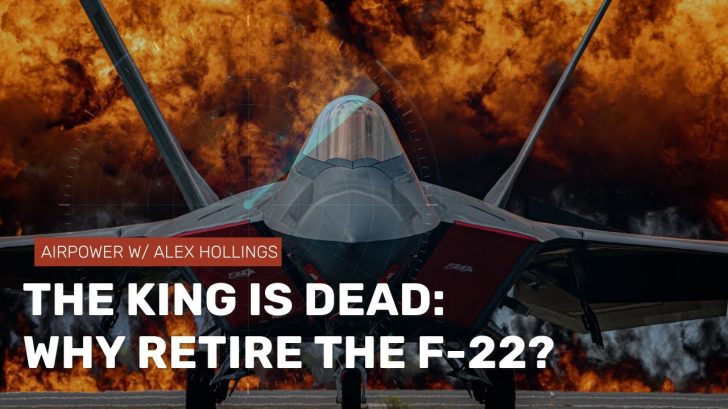America’s decision to retire its most potent air superiority fighter has been a hot topic since its announcement. While the exact date hasn’t been revealed to the public, one thing is for certain – the Raptor’s days are limited. Here’s why:
Unfortunate Start
The F-22 came out of the USAF’s Advanced Tactical Fighter Program in the 1980s. Back then, the Cold War was ongoing and the threat of a Soviet next-generation fighter meant America had to have its own as well. But by the time Lockheed Martin won the contract to build the F-22, the Soviet Union had already collapsed.
Because of this, the standing order for 750 Raptors was lowered to 186 in 2009. With only so many Raptors available in their arsenal, replacing the F-15s became harder. Meanwhile, the F-35 was already following close behind in its development, so large portions of F-22 production lines were then used for the F-35. This, in turn, made F-22 parts skyrocket in price.
Outdated in US standards
Like any type of technology, the Raptor also has an expiration date and the Air Force thinks it’s quickly approaching. Though air-to-air combat isn’t that big of a deal with the F-22 Raptor, it still might struggle against air defenses with a variety of new and improved detection and targeting technologies. After all, the Raptor would already have had a 40-year-old platform in 2030.
Nevertheless, the US Air Force is still planning on upgrading its Raptor fleet to make the transition smoother. The $11 billion series of updates include new external fuel tanks and pylons, new BVR air-to-air weapons such as the AIM-260, IRST capability, and a new electronic warfare suite. Unfortunately, this still wouldn’t be able to fix the dated avionics used in the F-22 Raptor.
Avionics aren’t the only thing keeping the F-22 down, however. It was also found that the F-22’s radar-absorbent coating was actually highly susceptible to damage during high-speed flight. Not to mention, the frame is extremely expensive and time-consuming to repair.
Replaced by the NGAD
Due to how vague the timeline is for the F-22’s final departure, it’s entirely possible that the aircraft will still continue to fly longer than the Air Force is letting on. Or at least until America’s Next Generation Air Dominance program is finally unveiled to the public.
The new NGAD fighter is expected to fly alongside drone wingmen that can extend its sensor range and engage targets. Interestingly, the fighter might also become the basis for the new generation of fighters, much like the F-22 did before.



